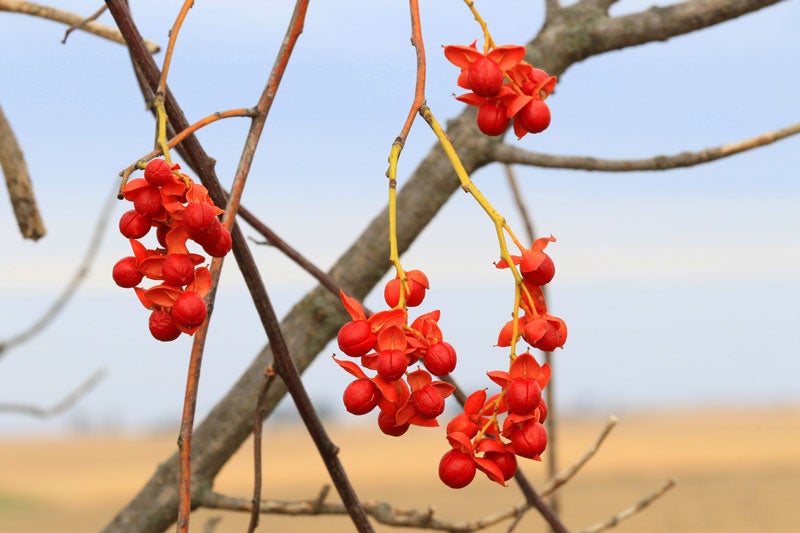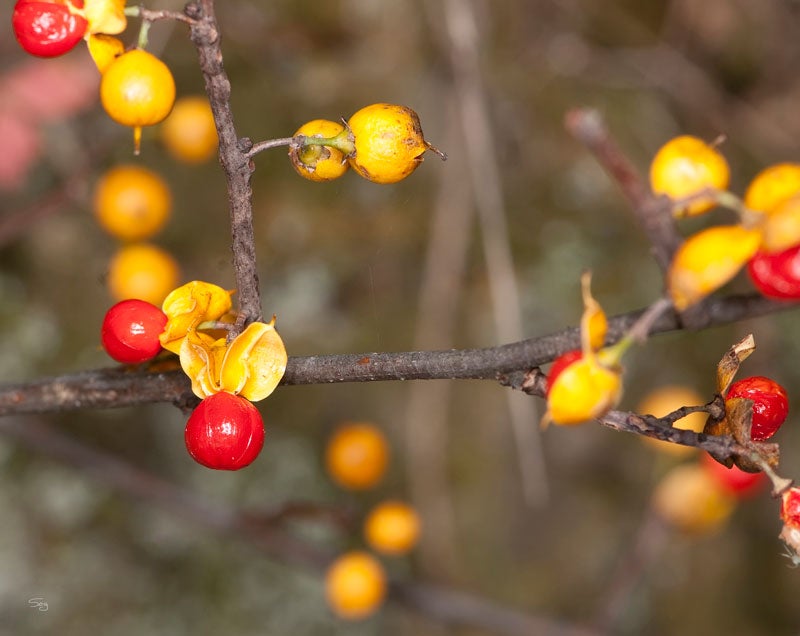American Bittersweet popular as holiday decoration
Published 6:19 pm Monday, December 21, 2020

- American Bittersweet, popular as a holiday decoration, will grow vertically or horizontally. Submitted | Larry Reis
|
Getting your Trinity Audio player ready...
|
Oriental Bittersweet also pretty, but highly invasive
By Helen Hamilton
American Bittersweet
Celastrus scandens

Oriental Bittersweet, photographed on Skyline Drive in Virginia. This plant is non-native and highly invasive like kudzu. Submitted | Seig Kopinitz
Bittersweet is popular for home decorations around the holiday season. It blooms in the spring with small green flowers that produce yellow fruit. In the fall hanging clusters of yellow-orange fruit split open to show bright red-orange seed coats. The broad oval leaves turn clear yellow in the fall, and then drop, allowing the berries to show to best advantage.
This twining, woody vine will grow to 20 feet or more, vertically or sprawling horizontally over bushes and fences, but it can be pruned to a desirable shape. It prefers rich, evenly moist soil in full sun or light shade and will grow in many habitats including fencerows, forest edges and roadsides. The plant will tolerate abuse, including heat, drought and even salt. It is native to the Virginia peninsula and mountains and ranges south to Florida and Texas.
Plants are male or female, and both sexes are needed for fruit set. Pollination is by insects, especially bees, and also by wind. There is a cultivar “Autumn Revolution” that is self-pollinating; only one plant is needed to produce large and abundant fruits.
Unfortunately, the native American bittersweet is declining, while the non-native Oriental bittersweet (Celastrus orbiculatus) is spreading and increasing in abundance. Oriental Bittersweet is commonly sold for home decorations in the holiday season because the small fruits occur in clusters all along the stem. (The native American Bittersweet grows large fruits in profusion only at the tips of the stems.)
Oriental Bittersweet is a highly invasive species in Virginia. It is native to Japan, Korea and China and was brought to this country in the mid-1800s as an ornamental. Now naturalized in states from Maine to Georgia and west to Iowa, this robust vine covers natural vegetation, forming thick pure stands. It can girdle trees, strangle shrubs, and the weight of the vine weakens the crown and eventually kills the tree. It takes over the landscape, like kudzu. Control is difficult — a few vines can be pulled by hand but any roots remaining will resprout.
Be careful when buying bittersweet at garden centers and farmer’s markets — if the fruits occur along the stem at leaf axils, it is Oriental Bittersweet. When used as home decorations, the seeds are released to the landscape after the stems are discarded. Don’t buy Oriental Bittersweet!
For more information about native plants, visit www.vnps.org.





